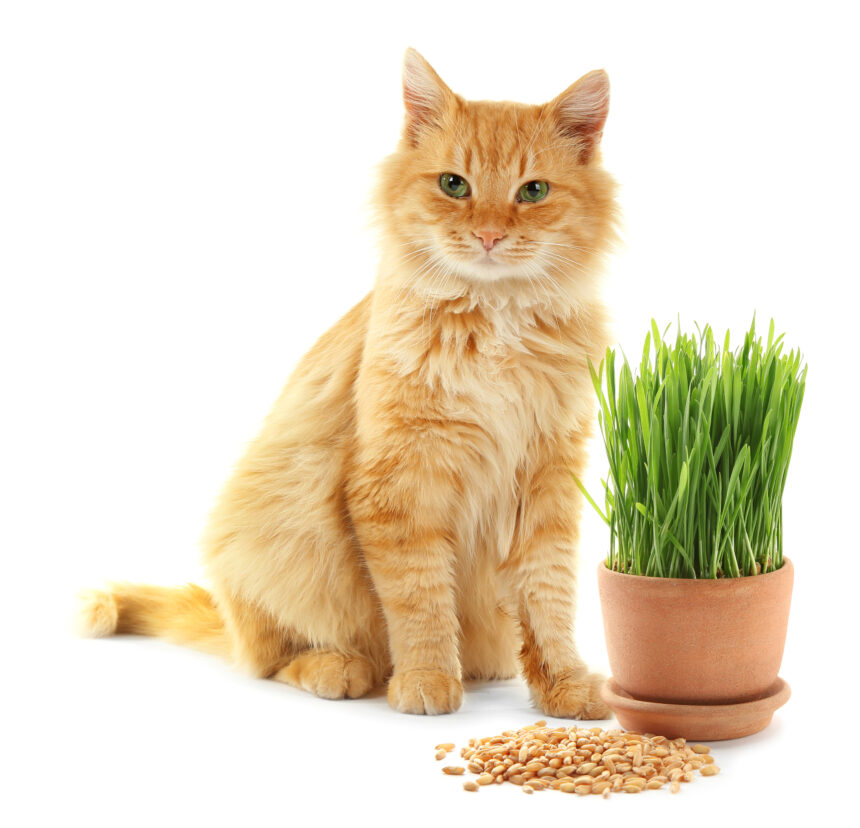Caring for your feline friend goes beyond the usual toys and treats; it’s about enhancing their well-being with little extras like cat grass. You’ve likely seen your cat nibble on houseplants, but with cat grass seeds, you can provide a safe and nutritious alternative that’ll keep them away from potentially toxic foliage.
In this article, we’ll delve into the benefits of cat grass for your pet, how to grow it from seeds, and tips to ensure it thrives. You’ll discover that adding this greenery to your cat’s environment is not just a fancy fad—it’s a step towards supporting their digestion and satisfying their natural instincts. Keep reading to learn how to bring a touch of the wild indoors for your kitty’s pleasure and health.
Benefits of Cat Grass for Your Pet
Cat grass provides a myriad of benefits that contribute significantly to your feline friend’s health and contentment. Understanding these advantages can help you better cater to your cat’s needs, ensuring they lead a happier, more balanced life.
Aids in Digestion
One of the primary reasons cat owners introduce grass into their pet’s diet is to aid digestion. Grass contains fibre, which helps prevent the formation of hairballs and facilitates the elimination of undigested matter.
Supplies Essential Nutrients
By nibbling on cat grass, your pet ingests valuable nutrients like folic acid, which plays a crucial role in oxygen transportation and helps in the production of hemoglobin. Providing a natural supplement of vitamins and minerals, cat grass can be an excellent complement to your cat’s diet.
Provides a Safe Alternative to Toxic Plants
Many houseplants are potentially harmful to cats. By offering cat grass, you divert your pet’s attention from these dangerous options while still satisfying their urge to graze, thus safeguarding them from accidental poisoning.
Encourages Natural Behavior
Cats have a natural instinct to chew on grass. It is an activity that can relieve stress and provide a feeling of comfort. By having access to cat grass, cats can engage in this instinctual behaviour in a safe and controlled environment.
Incorporating cat grass into your pet’s habitat isn’t just about following a trend—it’s about enriching their lifestyle and attending to their health needs. Providing cat grass is a simple yet impactful way to enhance your cat’s overall well-being.
Growing Cat Grass from Seeds
Cultivating cat grass from seeds is a straightforward process that can significantly benefit your feline friend. It’s cost-effective and allows you to ensure the purity of the grass your cat consumes. To start, you’ll need to acquire high-quality cat grass seeds, available at most pet stores or online retailers.
Step-by-Step Guide to Planting
- Select a container with proper drainage.
- Fill the container with potting soil, leaving about an inch at the top.
- Sprinkle the seeds evenly across the soil surface.
- Lightly cover the seeds with a thin layer of soil.
- Water gently to moisten the soil without oversaturating it.
Optimal Growing Conditions
Ensure your cat grass is placed in an area with ample sunlight to encourage growth. The seeds typically germinate within 3-7 days, and the grass will be ready for your cat to enjoy in about two weeks. Keep the soil consistently moist, but be cautious of overwatering as it can lead to fungal growth.
Maintenance and Health
Regular trimming of the cat grass is essential to keep it from becoming too sparse or overgrown. It also helps in preventing the development of mold. Apart from the regular watering and trimming, cat grass requires minimal maintenance.
Regularly offering fresh cat grass from homegrown seeds can contribute greatly to your cat’s health, pushing them towards engaging in their instinctive behaviours, such as nibbling on the grass, which in turn aids their digestion. Engaging in natural activity like this can help reduce hairballs and provide your pets with the essential nutrients they need.
Tips for Ensuring Cat Grass Thrives
Making sure your cat grass grows healthy and strong requires attention to detail and the right conditions. Optimal sunlight is crucial—cat grass needs about 4-6 hours of direct sunlight daily. If natural light is scarce in your home, consider using a grow light to provide sufficient rays.
Watering is another key factor. The soil should be kept consistently moist, but never soggy. Over-watering can lead to root rot, which is detrimental to plant health. It’s a delicate balance, but typically, watering once the top inch of soil is dry works best.
Here are several pointers to get the most out of your cat grass:
- Use a well-draining pot to prevent excess water accumulation.
- Ensure the room temperature remains around 65-70°F (18-21°C) for optimal growth.
- Fertilize sparingly with a balanced liquid fertilizer to provide nutrients without overwhelming the plant.
- Avoid placing your cat grass near vents or drafts as extreme temperature changes can shock the plant.
- Periodically rotate the pot to ensure even growth since cat grass will lean towards the light source.
Monitoring your plants closely will allow you to spot issues quickly. Yellowing leaves often signal over-watering, while browning tips might indicate under-watering or too much direct sunlight. Adjust your routine accordingly to maintain the health of the cat grass and keep your feline friend happy and engaged with this beneficial plant.
Cat Grass: Supporting Digestion and Natural Instincts
Cat grass is not just another plant in your household; it plays a crucial role in your feline friend’s well-being. Packed with vitamins and nutrients, cat grass aids digestion and helps prevent hairballs. It’s an excellent source of fibre, which is essential for the digestive system.
When cats nibble on grass, they ingest fibre that can help with constipation and control diarrhoea, allowing for a smoother digestive process. Moreover, the act of chewing on grass is a natural behaviour that provides a sense of comfort and mirrors their instincts in the wild.
Including cat grass in your pet’s environment encourages them to indulge in natural grazing behaviour. In the wild, felines consume grass after they’ve feasted on their prey. The grass would wrap around indigestible parts like bones and feathers, aiding in expelling these from their system. Though domesticated cats aren’t hunting like their ancestors, they retain the instinct to graze.
Harnessing the Benefits
To ensure your cat reaps these benefits, consider:
- Regularly planting fresh batches to maintain supply
- Placing the pot in an accessible location for your cat
- Observing your cat’s interaction with the grass to ensure it’s a positive experience
Remember, moderation is key. Too much of anything can cause upset, and cat grass is no exception. Monitor your cat to determine the right amount of grass it needs, and keep an eye out for any changes in behaviour or stool consistency that may indicate overconsumption.
Bringing the Wild Indoors for Your Kitty’s Pleasure and Health
Cat grass seeds unlock a slice of the outdoors for your indoor cat, providing an essential outlet for your cat’s natural instinct to nibble on greens. By growing cat grass, you’re offering natural digestion aid and an enjoyable activity for your furry friend.
- Aids Digestion: Cat grass contains fibre that assists in digestion and can help prevent hairball formation, ensuring your cat’s gastrointestinal health is in tip-top shape.
- Enrichment: An indoor lifestyle can often be unstimulating for cats. Cat grass adds a tactile element to their environment, mimicking the stimulating diversity of the outdoors.
- Detoxification: Chewing on grass helps cats to induce vomiting when they’ve ingested something indigestible, acting as a natural detox.
Grown from your own carefully selected cat grass seeds, this indoor garden is toxin-free, unlike the risky outdoor plants your cat might be tempted by. Cultivating cat grass also places you in control of the quality of the greens your cat consumes.
Case studies have shown that cats participating in homes with cat grass readily available are more likely to have better digestive health. For instance, regularly munching on cat grass can result in improved stool consistency due to the natural fibre content. Cat owners report fewer incidents of hairballs and an overall increase in their cat’s vitality and wellbeing.
Make sure to replenish the cat grass supply regularly. As it’s grown indoors, it’s free from the contaminants of outdoor grass, making it a safer alternative. Healthy, happy cats enjoy engaging with nature, and with cat grass seeds, you’re bringing that experience right to your living room.
Conclusion
Growing cat grass from quality seeds isn’t just a fun hobby; it’s a vital addition to your indoor cat’s well-being. You’ve learned about the significant health perks it offers, from aiding digestion to providing essential enrichment. Remember, a steady supply of fresh cat grass can lead to a happier, healthier feline with fewer hairball issues. So why not give your cat the gift of nature inside your home? It’s a simple step that can make a world of difference to your furry friend.

